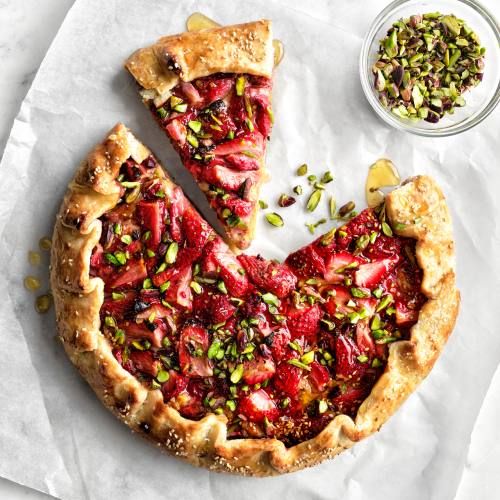
The top three USDA grades you'll see in stores are prime, choice and select. The labels reflect the degree of marbling (the ratio of fat to lean meat), color and maturity.
- Prime beef, the highest grade, is from young cattle and contains the most marbling.
- Choice beef lacks the degree of marbling found in prime but still produces a number of tender and juicy cuts.
- Select is a label applied to meat that is particularly lean.
Aging greatly improves the texture and flavor of beef, yielding a buttery character and intense taste. Most steaks are wet aged, which involves vacuum-sealing the meat and refrigerating it 1 to 4 weeks.
Dry-aged beef, which is stored unwrapped at precise temperatures and humidity levels for several weeks, loses a large amount of moisture, which concentrates the flavor. Some cooks prefer dry-aged beef for simple preparations where the flavor of the beef shines through.
STORING
Store beef in butcher paper in your refrigerator. The ideal storage temperature for beef, 28º to 32ºF, is colder than most home refrigerators. Use a thermometer to determine the coldest part of your refrigerator and store the meat there. Cook meat within 3 days, or freeze it for up to 6 months.
TRIMMING
Most beef cuts have already been trimmed of fat before they are sold. Some cuts, especially large roasts, may still have a layer of fat. Leaving about a quarter-inch of surface fat helps baste the meat while it cooks, keeping it juicy.
BRINGING TO ROOM TEMPERATURE
Cooking times in most recipes are based on room-temperature meat. Meat not at room temperature, especially large roasts, will take longer to cook, and the surface will cook far more quickly than the interior. Cooking times also depend on the cut's thickness: a thin steak may be ready after 15 minutes, but a standing rib roast may take 2 hours.
SEASONING
A high-quality steak destined for grilling needs only a generous sprinkling of salt and pepper. Other cuts benefit from additional seasoning in the form of a rub, paste or marinade. If you marinate beef, pat the surface dry before cooking with dry heat to ensure proper browning.
RESTING
Allowing beef to rest after cooking – from 4 or 5 minutes for a steak to up to 2 hours for a large roast – is crucial to ensure properly cooked and juicy meat. During this resting period, the juices redistribute and the meat finishes cooking, reaching its ideal doneness temperature.
Grain-fed beef produces richly flavored meat with abundant marbling, but the animals often live in close quarters in feedlots and require antibiotics to remain healthy. Consumers and chefs have rediscovered the taste and benefits of beef from cattle raised on grass. Some ranchers follow a hybrid process: the cattle feed on grass, which is healthier for them and better for the environment, and then, just before going to market, the cattle are "finished" on grain to add the rich marbling of grain-fed beef. Be sure to ask your butcher whether their beef is grain fed or grass fed.











